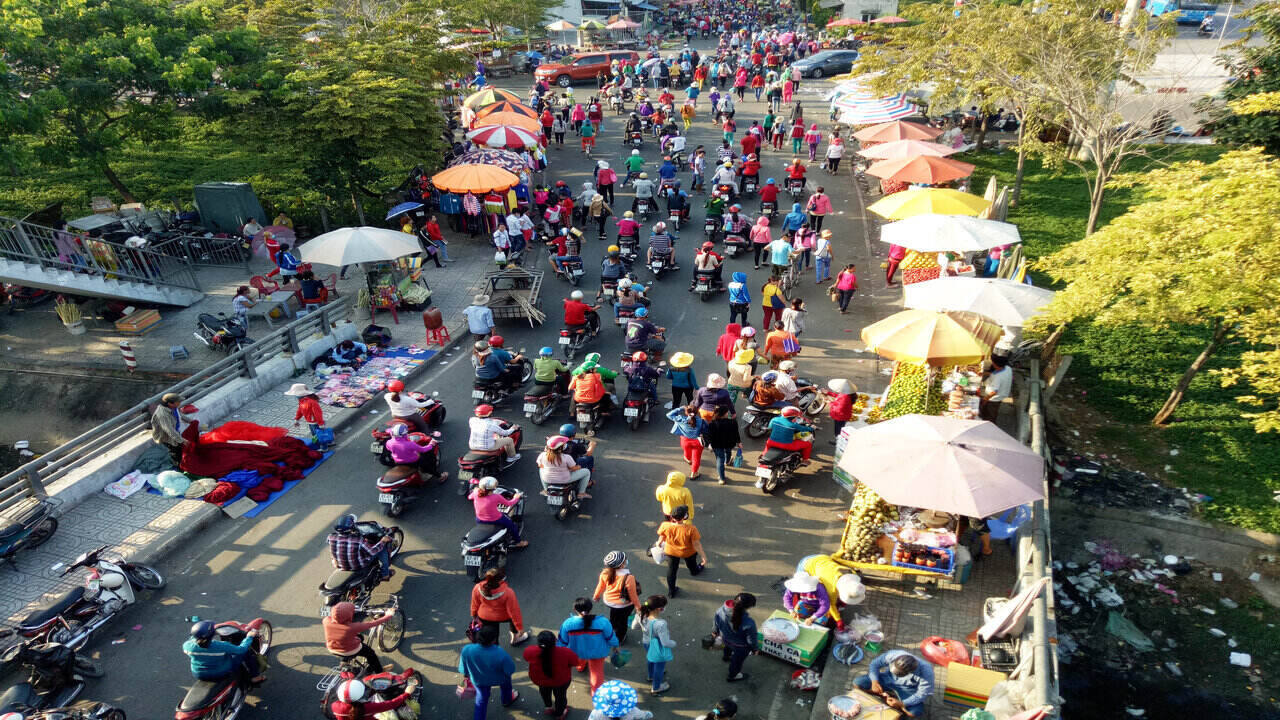The fact that workers are leaving HCMC and some neighboring provinces in the southeastern key economic zone is more serious than thought
When the workers have to depart HCMC for their home provinces, it means that they cannot stay in place anymore. Income failing to pay for living expenses and forced immobility for a long time because of the social distancing imposed to fight the
Covid-19 pandemic are the two main reasons for the exodus. Yet one of the biggest problems by the time they come back to the city is whether jobs still wait for them?
From lack of workers to lack of jobs
At the time HCMC and several other localities imposed the social distancing to fight the pandemic by introducing measures—such as “three-on-the-spot regulation” or “one path, two destinations”—only a small proportion of enterprises met the conditions to comply with them. And of the complying enterprises, some had to stop halfway because they could not tolerate it as the lockdown dragged on due to huge additional costs incurred to meet these conditions.
They then had orders to fulfill but lacked labor to carry out the orders. The problem was customers, especially international ones, could not wait for a long time. One or two weeks may be acceptable, but if the wait lasts for months, customers have to switch their orders to another partner in another country. Their costs may be higher in doing so but their losses are smaller.
As the end of the year is approaching, this time is also the peak season for consumer goods consumption in Vietnam’s key markets, such as the United States and the European Union. Our customers could not wait any more and they had to seek alternative factories instead of compensating for unrealized contracts or losing profit.
It is this reason that the international press has reported news about some international brands that have sought manufacturing partners in addition to Vietnam or have planned to resettle their factories elsewhere. Now, the story is no longer a lack of labor but a lack of orders.
Covid-19 has also immensely influenced the labor market. Even in economies where workers are wholeheartedly supported, job changes have rendered unbalanced the market supply-demand post-Covid-19.
Take for example, the food and drink services at restaurants in many countries. After the economic reopening, this sector was in a severe shortage of labor because a huge number of workers, even veterans, had skipped jobs. This means after the pandemic, some industries will witness a lack of labor while in others the number of new job opportunities will be too small to receive the army of job seekers, resulting in higher unemployment.
Lessons learnt and future plans
Workers fleeing their work places to come home to seek temporary shelter are mostly a result of the authorities’ lack of full understanding of and adequate attention to the returnees. As workers’ financial resources are limited, the time for their tolerance should have been fully calculated. For instance, if their savings can last for two or three months, then no income after this time means they will cross the limit.
For workers who wanted to come home this time, the long social distancing in which they had to endure appalling hardships had piled tremendous psychological pressure on them. Therefore, as soon as the lockdown was lifted, they departed for their home provinces immediately.
If the concerned authorities had had better understood these workers’ financial and psychological endurance, they could have come up with more appropriate measures. For instance, before the extension of a lockdown, some of the workers wishing to go home could be permitted to take turn to do so.

More importantly, localities where the workers wanted to arrive in should not put into practice draconian pandemic fighting measures to achieve zero infections. Given the current Covid-19 development, implementing all measures to have no new infections is impossible. But the numbers of deaths and grave patients are more significant indicators.
And more worrying is the switch of orders from Vietnam. Next is whether investors will relocate their factories. If this does happen, it will take a lot of time and efforts to lure them back.
Vietnam and some other countries have kickstarted programs to allow workers to change jobs by giving training to the work force. Workers may also remain in the same industry and learn new skills and knowledge. For instance, in the manufacturing industry, workers did simple jobs to turn out simple products before. Now, they can do more complicated jobs to make products which require higher accuracy and higher technology.
Workers’ wish to come home is only temporary because their tolerance has reached the limit. They need a new source of energy to recover. The author of this article believes that if they cannot find jobs back home, they will return to their former work places in cities and industrial parks when the pandemic subsides. However, it is not known that whether orders from customers are still waiting for them, or whether they can meet new recruitment requirements.
Policymakers need long-term visions. To remedy a flawed policy, however, it takes quick determination and short-term measures. Above all, these measures should prioritize the interest of workers and the people.











